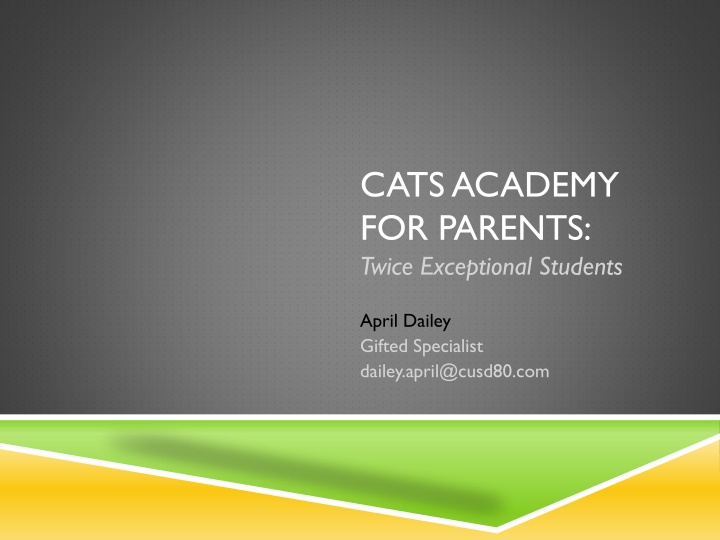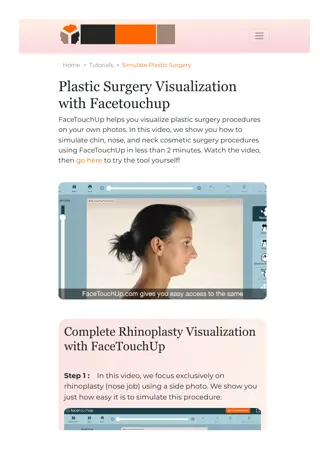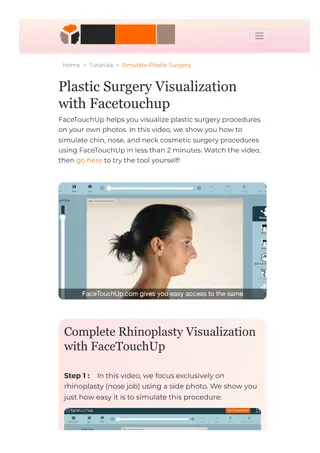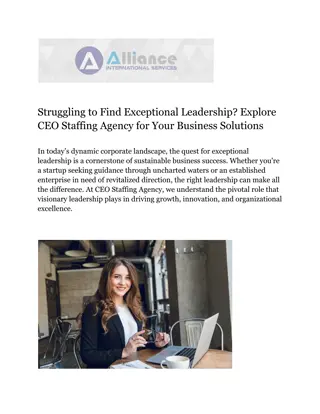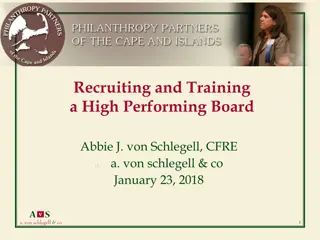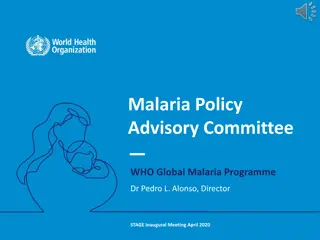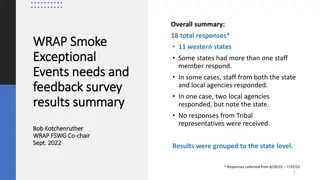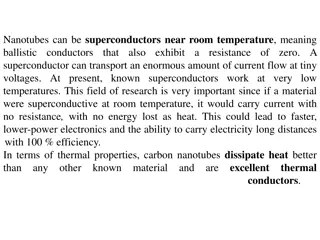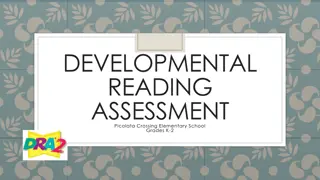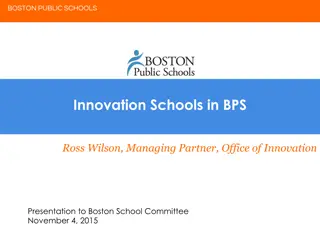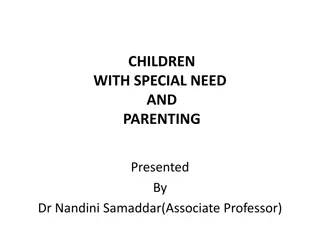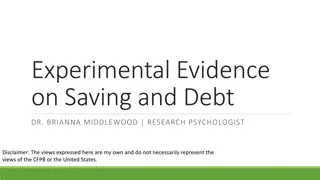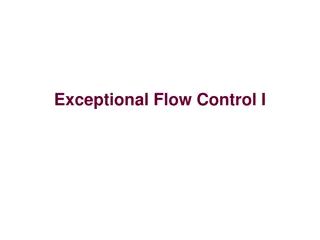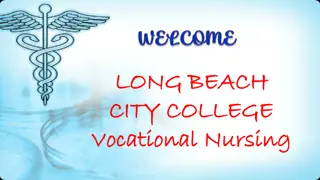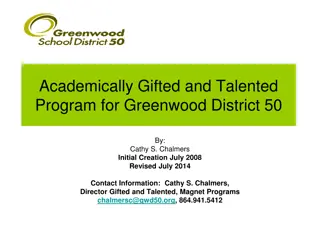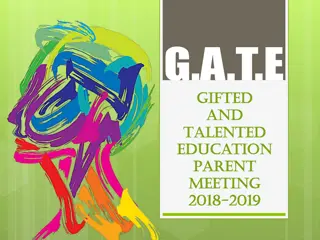Twice-Exceptional Students
Students who are both gifted and disabled face challenges in receiving appropriate identification and services in schools. The dilemma arises from the complexity of addressing their unique needs, often resulting in under-identification and under-service. Dr. Jim Russell sheds light on how exceptional abilities or disabilities can overshadow each other, leading to these students being overlooked or misunderstood. It is crucial to identify and support twice-exceptional students effectively to help them reach their full potential.
Download Presentation

Please find below an Image/Link to download the presentation.
The content on the website is provided AS IS for your information and personal use only. It may not be sold, licensed, or shared on other websites without obtaining consent from the author.If you encounter any issues during the download, it is possible that the publisher has removed the file from their server.
You are allowed to download the files provided on this website for personal or commercial use, subject to the condition that they are used lawfully. All files are the property of their respective owners.
The content on the website is provided AS IS for your information and personal use only. It may not be sold, licensed, or shared on other websites without obtaining consent from the author.
E N D
Presentation Transcript
CATSACADEMY FOR PARENTS: Twice Exceptional Students April Dailey Gifted Specialist dailey.april@cusd80.com
WHO IS THE TWICE EXCEPTIONAL STUDENT? A gifted student with a disability Identified in one or more areas of giftedness AND Identified with a disability according to federal disability eligibility criteria, or served through a 504/IEP
WHAT IS THE DILEMMA? Students who are gifted and disabled are at risk for not achieving their potential because of the relationship that exists between their enhanced cognitive abilities and their disabilities. They are among the most frequently under-identified population in our schools. Twice- exceptional students present a unique identification and service delivery dilemma for educators. Often educators, parents, and students are asked to choose between services to address one exceptionality or the other, leaving twice-exceptional students both under-identified and underserved in our schools. nea.org
IDENTIFICATION An exceptional ability may dominate hiding their disability; their disability may dominate, hiding their exceptional ability; each may mask the other so that neither is recognized or addressed.
IDENTIFICATION A student who is formally identified as gifted but not having an identified disability may: Go unnoticed for possible special education evaluation Be considered an underachiever, often attributed to perceived laziness, poor motivation, or a low self-concept Maintain grade-level expectations until the difficulty level of the curriculum increases, often during middle and high school years
IDENTIFICATION A student who is formally identified as having a disability but not as gifted may: Be involved in programs, services, and instruction that are focused solely on remediation and/or compensation for the disability Have significantly underestimated intellectual abilities due to an inadequate assessment that yielded depressed IQ scores Become bored in special programs if the services do not match their required level of challenge Be misdiagnosed as having an emotional disability
IDENTIFICATION A student who is not identified disabled or gifted may: Be achieving at grade level and assumed to have average ability. Show areas of difficulty as curriculum becomes more challenging. Be viewed as performing within expectations and, therefore, never referred for a special education evaluation. Have deflated achievement and standardized test scores due to the disability and may not qualify for gifted education services.
COMMON TRAITS OF 2E LEARNERS Signs of Giftedness Signs of Learning Disability Excellent long-term memory Poor short-term memory Extensive vocabulary Speaking vocabulary more sophisticated than written Advanced verbal skills Has difficulty with spelling and phonics Grasps abstract concepts Performs better with challenging work Struggles with easy, sequential material Thrives on complexity Difficulty with rote memorization Highly creative, imaginative Poor auditory memory Extremely curious Weak in language mechanics Has high degree of energy Finds clever ways to avoid weak areas insightful
ACCOMMODATING ACADEMIC WEAKNESSES/DISABILITIES Supply opportunities for hands-on learning. Use graphic organizers to help these students see the big picture. Apply differentiated instruction (content, process, and product/assessment) techniques Provide direct instruction in skills that are affected by the disability (such as verbal and written expression, organization). Allow for the use of assistive technology where appropriate (such as text read by computer). Make modifications that allow for student success (such as keyboarding, spell check). Provide necessary accommodations (such as extended test/work time, working in a quiet or less distracting environment, use of assistive technology). Provide direct instruction in study skills and learning strategies. Promote student self-determination by working with students to develop knowledge, skills, and beliefs necessary for increasing self-understanding and autonomy (such as self-advocacy, goal setting).
ADDRESSING SOCIAL/EMOTIONAL ISSUES Twice-exceptional students can have social/emotional issues that interfere with their ability to make friends and sustain social relationships. Additionally, the social/emotional difficulties of twice- exceptional students are often linked with educational concerns (Reis & Colbert, 2004). Frequently, these social/emotional issues, such as feelings of failure, worthlessness, anger, depression, isolation/thoughts of suicide, mask their giftedness. Stu- dents need tools to overcome these issues and to see themselves as successful learners. It is important for twice- exceptional students to: Have an emotionally safe learning environment Have an opportunity to develop a healthy self-concept Recognize their emotional vulnerability Have occasions to interact with twice-exceptional peers Visualize a positive personal future.
ADDRESSING BEHAVIORAL ISSUES Difficult behavior typically has two purposes: avoidance or attention- gaining. These behaviors are often viewed as aggressiveness, laziness, or manipulation. In order to address these issues, educators need to: Be attuned to the function or purpose of the behavior Provide a consistent environment with limits and expectations Teach self-regulation skills Teach appropriate behaviors to use in place of inappropriate behavior (such as raising a hand to get the teacher s attention rather than shouting out in class) Provide positive behavioral supports not focused on negative consequences.
RESOURCES Sengifted.org NAGC.org http://www.nea.org/assets/docs/twiceexceptional.pdf http://jimrussellphd.com/ Learning Outside the Lines, by Jonathon Mooney Uniquely Gifted, edited by Kiesa Kay The Visual-Spatial Learner, by Linda Silverman Guiding the Gifted Child, by James T. Webb, Elizabeth Meckstroth, and Stephanie Tolan Misdiagnosis and Dual Diagnoses of Gifted Children and Adults, by Webb, Amend, Webb, Goerss, Beljan, & Olenchak
